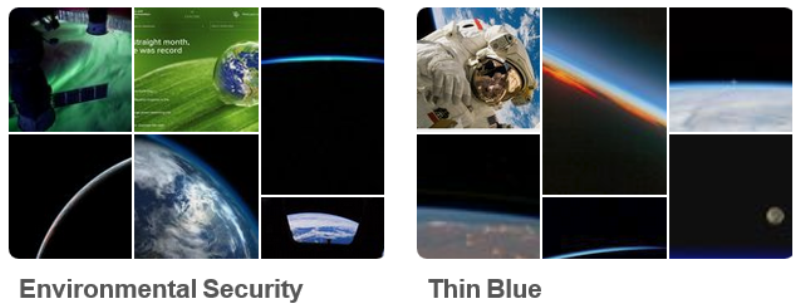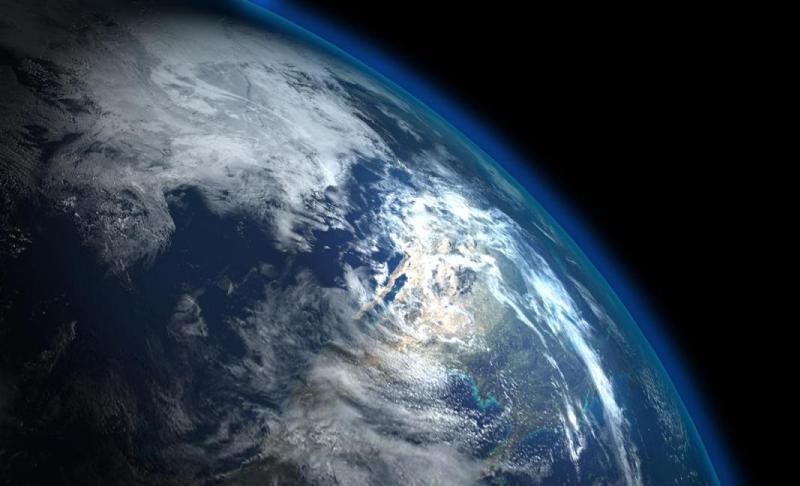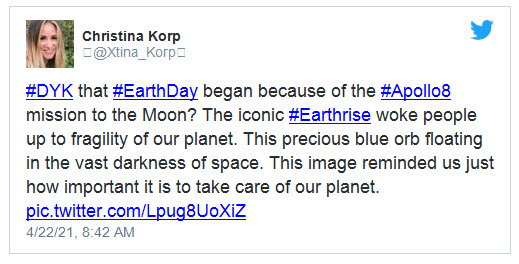File:Earth Day and Climate at the Center.jpg
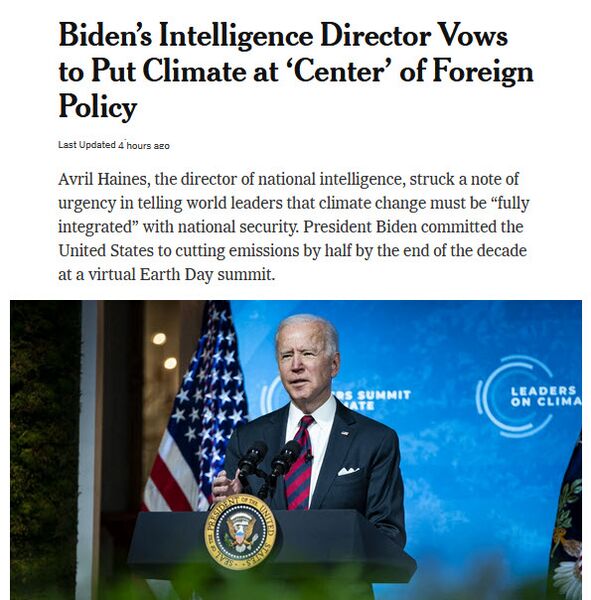
Original file (595 × 604 pixels, file size: 131 KB, MIME type: image/jpeg)
<addthis />
On Earth Day, April 22, 2021
Biden’s Intelligence Director Vows to Put Climate at ‘Center’ of Foreign Policy
April 23, 2021,
Avril Haines, the director of national intelligence, struck a note of urgency in telling world leaders that climate change must be “fully integrated” with national security. President Biden committed the United States to cutting emissions by half by the end of the decade at a virtual Earth Day summit.
As the years have passed, GreenPolicy360/Strategic Demands have continued to press for a new security vision, new definitions of how to define 'national security'. Now, it begin to be seen how the US, with other nations, is moving to set new security goals and a new strategy recognizing the climate crisis upon us -- and necessity of immediate action to confront the existential danger.
Earth Day 2021 will be recognized as a momentous day.
Now comes the reckoning, the challenge of reality, of matching action to words...
New Definitions of National... and Global Security
GreenPolicy360 & Strategic Demands / #StratDem
GreenPolicy360/StrategicDemands: The key to 21st century security is "strategic realism". Any full scientific assessment of security threats on the horizon is replete with environmental/global risks that are drawing daily into view. These risks are presenting a clear and present danger, in U.S. Department of Defense terms. A 'clear and present danger' has yet to be acknowledged by the US Department of Defense, or in the US military budget that approaches $1 trillion in annual spending. Other nations continue a race seeing security in terms of defense/military spending. This cannot be sustained. Forward planning with a new and more acutely aware vision of security is demanded now.
GreenPolicy360 and its associate Strategic Demands challenge prevailing views that are not focused as they must be on existential threats of our era. A new vision of security must drive the politics of our times. New definitions of national and global security must become highest priorities.
We specifically point at the US 'National Intelligence Program' and its annual threat assessment reports. We see a shift taking place in the intelligence community (IC) as it is now beginning to recognize and acknowledge environmental security as a crisis that is no longer distant. The climate crisis is real. Severe eco-impacts are being experienced by communities, national to local, as science is reporting with voluminous data and attendant warnings.
Action is demanded, shift in intel must move climate and environmental impacts from 'irritants' to a central role. GreenPolicy360 and Strategic Demands point the way toward the new definitions, responses and solutions necessary for comprehensive, and sustainable security.
Senate Intelligence Committee’s Worldwide Threats Hearing
Via the Center for Strategic & International Studies (CSIS)
April 2021
This annual report of worldwide threats to the national security of the United States responds to Section 617 of the FY21 Intelligence Authorization Act (P.L. 116-260). This report reflects the collective insights of the Intelligence Community(IC), which is committed every day to providing the nuanced, independent, and unvarnished intelligence that policymakers, war fighters, and domestic law enforcement personnel need to protect American lives and America’s interests anywhere in the world.This assessment focuses on the most direct, serious threats to the United States during the next year. The order of the topics presented in this assessment does not necessarily indicate their relative importance or the magnitude of the threats in the view of the IC. All require a robust intelligence response, including those where a near-term focus may help head off greater threats in the future, such as climate change and environmental degradation.
What did Director of National Intelligence Avril Haines mean when she said the United States should “broaden our definition of national security?”
The Annual Threat Assessment (ATA) and following hearings devoted time to discuss the Covid-19 pandemic and climate change. While the IC has long had in-house experts exploring the national security implications of health issues and environmental pressures, both are generally considered as irritants giving rise to core national security considerations like political instability or resource-based conflict rather than national security issues in and of themselves. (boldface added) Director Haines seems to be advocating for a more central role for issues like these in the IC’s work.
And this is the rub: the world is big and complex, there is more data to read than any human can read, and many of the issues are intertwined. This is what the IC means by “cascading” challenges—a global pandemic is not merely a public health issue—it also causes economic disruption that can lead to migration and political destabilization, and the indicators providing warning of these threats are not stealable secrets. Sorting the signal from the noise in a world with a lot of noise is the central challenge for the IC, and it will need transformative reform, including massive computing resources and artificial intelligence and machine learning assistance, to make sense of it.
____________
Avril Haines was sworn in as the Director of National Intelligence on January 21, 2021. She is the seventh Senate-confirmed DNI in our nation’s history and the first woman to lead the U.S. Intelligence Community.
Office of the Director of National Intelligence
By statute, the DNI is the principal intelligence adviser to the President, and determines and manages the National Intelligence Program (NIP) budget of more than $50 billion, the U.S. government’s total intelligence spending aside from military intelligence. The DNI is also tasked with integrating the efforts of the 17 elements of the Intelligence Community (IC).
Ⅰ Ⅱ Ⅲ Ⅳ Ⅴ Ⅵ Ⅶ Ⅷ Ⅸ Ⅹ Ⅺ Ⅻ — Ⅻ Ⅺ Ⅹ Ⅸ Ⅷ Ⅶ Ⅵ Ⅴ Ⅳ Ⅲ Ⅱ Ⅰ
Each of us can make a positive difference
Planet Citizens, Planet Scientists
Look at how thin our atmosphere is
Look carefully, there, above us, a http://www.thinbluelayer.com, a *very* thin blue atmosphere enveloping and enabling life on Planet Earth.
On Earth Day let us reflect and recall our responsibility -- to protect life as we travel into the future together...
○
File history
Click on a date/time to view the file as it appeared at that time.
| Date/Time | Thumbnail | Dimensions | User | Comment | |
|---|---|---|---|---|---|
| current | 17:04, 23 April 2021 | 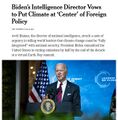 | 595 × 604 (131 KB) | Siterunner (talk | contribs) |
You cannot overwrite this file.
File usage
- About Us
- Additional Website Resources - Linked Data - Green Best Practices
- Atmospheric Science
- Climate Change
- Climate Policy
- Earth System Science
- Ecology Studies
- Eco-nomics
- Education
- Energy
- Environmental Protection
- Environmental Security
- Environmental Security, National Security
- Envirosecurity
- Fossil Fuels
- Global Security
- Green Energy Initiatives
- Green Graphics
- Green Politics
- Health
- NASA
- National Security
- Natural Resources
- New Definitions of National Security
- NOAA
- Nuclear Nonproliferation
- Nuclear Proliferation
- Nuclear Weapons
- Peace
- Planet Citizen
- Planet Citizens
- Renewable Energy
- Resilience
- Sea-Level Rise & Mitigation
- Strategic Demands
- Sustainability Policies
- ThinBlueLayer
- Threat Multiplier
- US
- US Environmental Protection Agency
- Whole Earth
- Digital Citizen
- Digital Rights
- EOS eco Operating System
- Europe
- European Union
- Human Rights
- Internet
- Mobile Internet
- Online Education
- Online Privacy
- Planet API
- Planet Citizens, Planet Scientists
- Privacy Rights
- World Wide Web
